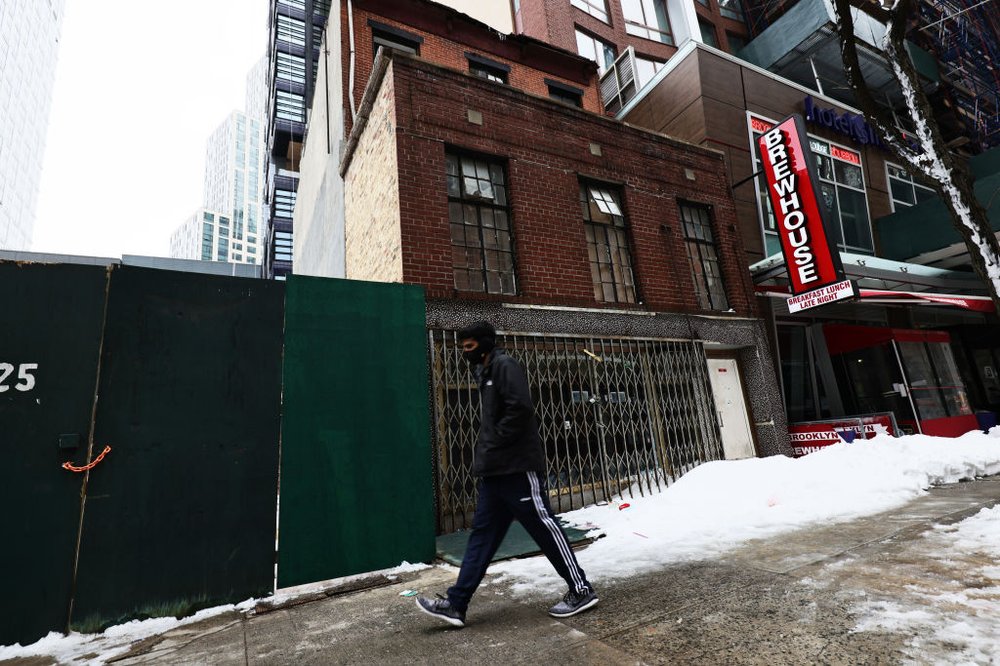NYC could mark the start of a ‘Harriet Tubman Underground Railroad Corridor’
June 19, 2024, 7 a.m.
The 500-mile, designated trek would stretch to Niagara Falls. It was the path to freedom taken by thousands of enslaved people.

Harriet Tubman has been the subject of operas, multiple movies and two U.S. postage stamps, and now efforts are underway to designate a 500-mile stretch of New York State in her honor.
The Harriet Tubman Underground Railroad Corridor would begin in New York City, where the former fugitive and Civil War spy conducted much of her work and fundraising in service of emancipation, and end in Niagara Falls, near the Canadian border. All the states along the way would be “linked” as part of an “All American Road.”
Ally Spongr DeGon, the president of the Underground Railroad Consortium of New York State, a group that is leading the effort, said her group’s goal is to get a bill passed by the state Legislature in early 2026, authorizing the corridor.
“We've been working to promote and bring visibility to the stories of the underground railroad and freedom seekers in New York,” said DeGon.
Tubman was born into slavery in Maryland in 1822, according to the National Museum of African American Culture and History. In 1849, she and her brothers escaped the plantation where they were enslaved, but her brothers soon turned back, leaving Tubman alone in her journey north.
She eventually arrived in Philadelphia. And between 1850 and 1860, she is believed to have made as many as 13 trips back south, guiding enslaved friends and family to freedom.
Historians said her work was often done in collaboration with other abolitionists in New York, where enslavement was a “defining feature of New York City’s origin story,” as a 2022 report by the Montgomery, Alabama-based Equal Justice Initiative put it. In 1799, Gov. John Jay signed an act to gradually end slavery in the state, but full emancipation did not occur in New York until 1827.
Kate Clifford Larson, a historian and author of “Bound for the Promised Land: Harriet Tubman: Portrait of an American Hero,” said Tubman regularly met with Sydney Howard Gay, a white abolitionist and editor of the Anti-Slavery Standard, whose New York City office served as a hideout for men and women who had escaped enslavement.
If Harriet Tubman, a fugitive from the law, a petite, 5-foot-tall woman who could not read and write words, could stand up and battle these forces of slavery and unfreedom, then certainly we can stand up and fight for equality and freedom and civil rights, too.
Kate Clifford Larson, a historian
Gay and others helped raise the funds for Tubman’s trips south, said Larson, who said the “rescue missions” cost anywhere from $30 to $100, “depending on how many people she was bringing out.”
In his book, “Gateway to Freedom: The Hidden History of the Underground Railroad,” historian Eric Foner wrote, “between 3,000 and 4,000 fugitive slaves may have received assistance while passing through the city.”
But the passage of the Fugitive Slave Law in 1850 made it increasingly risky for people to assist others in the act of gaining their freedom. This included the threat of federal prosecution, wrote Foner, prompting a number of people active in the underground railroad to burn their papers, thus depriving contemporary historians of records that would help them understand the true nature and extent of the network.
DeGon, said the consortium has held a series of public meetings across the state at which members of the public have been invited to weigh in on the proposed corridor and to share passed-down tales of the underground railroad, in hopes of learning more.
Robert Winstead, president of the Yonkers African American Heritage Committee, testified at a June 13 meeting in Yonkers that “uncovering” the trail of Tubman and others involved in the Underground Railroad would be a public service.
“It's one of the best stories hardly told,” Winstead said. “She did things that no one else did before, and no one since. And she did it with grace and power.”
Tubman died in the city of Auburn, in the Finger Lakes region, in 1913.
Existing data suggests that the development of the byway could have significant economic benefits. An economic impact study prepared by the Dorchester County Tourism Department in eastern Maryland surveyed 279 people who traveled through the county or adjacent Caroline county along the state’s Harriet Tubman Underground Railroad Byway.
The study found that 58% of travelers were from outside Maryland and 96% were from outside the two counties. On average, the study found that each person spent an average of $92 per day, on dining, shopping and visits to local historic sites.
“Based on 251,155 net new visitors to the Byway each year, they contribute $23 million in sales annually to the area,” the report said.
Beyond its economic and educational value, Larson argued that a byway would serve as an inspiration for people today.
“If Harriet Tubman, a fugitive from the law, a petite, 5-foot-tall woman who could not read and write words, could stand up and battle these forces of slavery and unfreedom,” said Larson, “then certainly we can stand up and fight for equality and freedom and civil rights, too.”
Correction: A previous version of this story misspelled Kate Clifford Larson's name.
New report shines spotlight on enduring stain of slavery in NY NY played a key role in the slave trade, but California’s leading on reparations NYC Council bill could make it ‘times up’ for public art, tributes to enslavers